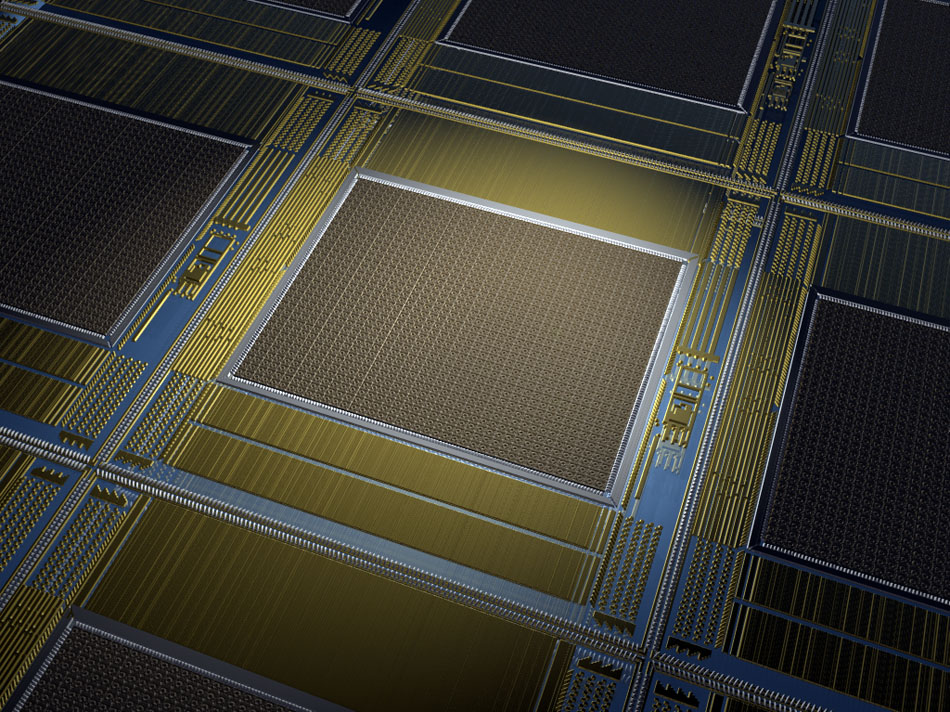 |
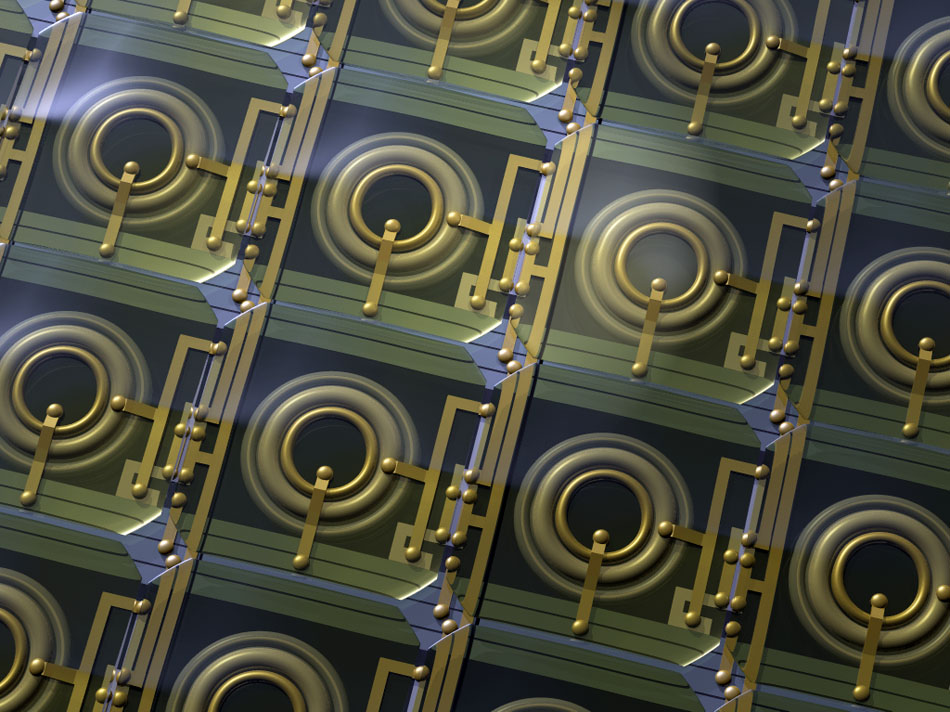 |
About AQUA
Our research mission is to model and develop hardware/software systems based on quantum devices. Particular emphasis is on high-speed 2D/3D optical sensing, embedded & reconfigurable processing architectures, single photon avalanche devices (SPAD) and design optimization techniques.
Our teaching mission is to equip engineers and scientists with a multi-disciplinary knowledge on state-of-the-art hardware/software systems. Check out the virtual tour of the lab.
Key Events and Awards
2024
The UCLA-led team has adapted FLIM to produce highly detailed real-time 3D images of tissue sections in little more than 30 seconds compared to the 10-plus minutes required using conventional technology. Detailed in the Proceedings of the National Academy of Science, the combined light-field tomographic FLIM (LIFT-FLIM) approach could open a range of new avenues in basic scientific research as well as biomedical applications where rapid biological sample mapping is needed.
Click here for more information.
Optica has published high profile research in both fundamental and applied optics and photonics since the first issue published in July 2014. In recognition of the Journal’s 10th Anniversary, they are featuring a collection of the top ten most highly cited articles from each year. Aqua’s article “Megapixel time-gated SPAD image sensor for 2D and 3D imaging applications” is one of the most cited for year 2020. Click here to read the paper.
You can view the list of the articles here.
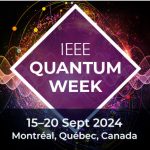
Doctoral student Vladimir Pešić, master student Andrew Wright and professor Edoardo Charbon won the 3rd Best Paper award at the the 2024 IEEE International Conference of Quantum Computing and Engineering held in Montreal, Canada, 15th-20th September. Their work, From Master equation to SPICE: a platform to model cryo-CMOS control for qubits presented as part of the Quantum Photonics (QPHO) tract, focuses on the models and the simulation framework needed for quantum processors that can be efficiently executed on classical hardware, and allows circuit design and specification derivation at all levels of the design.
Click here to read the paper.
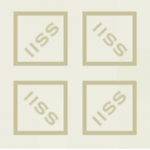
The ISSW 2024 presentations and posters are now part of the IISS online database and are now openly available for download to everyone! Here’s the link: https://imagesensors.org/2024-international-spad-sensor-workshop/
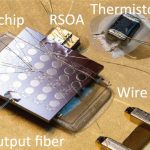
Check out Halil Kerim Yildirim’s new publication in Nature Communications, “Photonic-electronic integrated circuit-based coherent LiDAR engine”. Read the article here.
2023
- Our SuperMaMa team has achieved a breakthrough in the detection of protein ions: Due to their high energy sensitivity, superconducting nanowire detectors achieve almost 100% quantum efficiency and exceed the detection efficiency of conventional ion detectors at low energies by a factor of up to a 1,000. In contrast to conventional detectors, they can also distinguish macromolecules by their impact energy. This allows for more sensitive detection of proteins and it provides additional information in mass spectrometry. The results of this study were recently published in the journal Science Advances: “Highly sensitive single-molecule detection of macromolecule ion beams”, Science Advances 9, 48 (2023), DOI: 10.1126/sciadv.adj2801
https://www.science.org/doi/10.1126/sciadv.adj2801. See also SuperMaMa website: https://www.supermama-project.eu/dissemination/publications/ - The International SPAD sensor workshop & the SPAD sensor school ISSW 2024 will take place in Trento, Italy on June 3 to 6, 2024. For the first time, this edition of the workshop will include peer-reviewed contributions. Submission portal is now open, https://issw2024.fbk.eu/cfp. You can submit your workshops, papers or posters until December 8, 2023 (23:59 CET).
- QSE Distinguished Quantum Lecture: John Martinis, Monday December 4th, 17:00-19:00 UTC+1, SV1717, EPFL Lausanne:
Professor John Martinis, UC Santa Barbara, will hold a presentation titled Building a Quantum Computer within the framework of QSE Distinguished Quantum Lecture (https://memento.epfl.ch/event/qse-distinguished-quantum-lecture-john-martinis/) - Doctor Simone Frasca (TD: Prof. Edoardo Charbon) has been nominated as EDMI Laureate of the EPFL Doctoral Program Thesis Distinction for his thesis High-Kinetic Inductance Superconducting Technology for Quantum Applications, https://infoscience.epfl.ch/record/299374
- Professor Edoardo Charbon has been awarded the 2023 IISS Pioneering Achievement Award. He is being honored for “for his contributions to the development of SPAD arrays”. IISS, the International Image Sensor Society, is the premier society for imaging sensor physics and engineering. The IISS Pioneering Achievement Award, established in 2015, recognizes a person who made a pioneering achievement in image sensor technology, and judged by at least 10 years of hindsight as a foundational contribution.
- The manuscript entitled “Light Extraction Enhancement Techniques for Inorganic Scintillators,” published in Crystals has been highlighted as an Editor’s Pick.
- The manuscript entitled “Massively parallel, real-time multispeckle diffuse correlation spectroscopy using a 500 x 500 SPAD camera,” published in Biomedical Optics Express has been highlighted as an Editor’s Pick.
2022
- AQUA lab PhD student Yang Lin was awarded the Best Talk of a Young Researcher award at the Biomedical Photonics Network (BMPN 2022) conference.
- AQUA lab alumnus Dr. Kazuhiro Morimoto has been recognized as a rising star in nanoscience by Nature. Read the feature here.
- Check out the talk given by Prof. Charbon at the 2022 Quantum Engineering Workshop here.
- Giuliano Parma was awarded the “Picture of the Month” award by CMi at EPFL. Check out the image of the nano mushroom cloud here.
- Researchers at EPFL AQUA, TU Delft and Intel were awarded the AMD Best Paper award at the 2022 IEEE Custom Integrated Circuits Conference.
- The complete program for the User Group Meeting being held from March 21-23 in Neuchatel can be viewed here: UGM 2022 Leaflet
- Recent work by members of the AQUA lab, in collaboration with researchers from the University of Glasgow titled, “Light Detection and Ranging with Entangled Photons“, has been published in Optics Express and been highlighted as an Editor’s Pick.
- Learn more about the EU funded projet SuperMaMa (superconducting mass spectroscopy and molecule analysis), which involves members from the AQUA lab, on the following webpage.
2021
- AQUA researchers, in collaboration with Dartmouth have developed technology for next-generation tumor location.
- AQUA M.S. student Vladimir Pesic was awarded the Swiss-Photonics Award for best Masters project.
- SwissSPAD2 has been highlighted for tumor detection by EurekAlert. Read the article here.
- EPFL news highlights the review paper, “Single-photon avalanche diode imagers in biophotonics: review and outlook”, which is one of the most downloaded papers of the year 2020 by Light: Science & Applications.
- The review paper entitled “Single-photon avalanche diode imagers in biophotonics: review and outlook” has been selected as one of the 20 top downloaded papers by Light: Science & Applications for the year 2020. Read the article here.
- The International Conference on Cryogenic Electronics for Quantum Systems is being held (virtually) at EPFL in Neuchatel this week. Check out the information here.
- Prof. Edoardo Charbon and researchers at QuTech Delft in collaboration with Intel Corp., have published their work on cryogenic control of qubits in Nature — read here for more details.
- SuperMaMa Webinar, Fri May 21st 15:00-17:15 UTC+1:
Prof. Edoardo Charbon will hold a presentation titled “Superconducting Nanowire Camera: design and fabrication” within the framework of a webinar organized by the European project SuperMaMa – Superconducting Mass Spectrometry and Molecule Analysis (https://www.supermama-project.eu/webinar-2021/) - AQUA lab was well represented at the International Solid-State Circuits Conference (ISSCC 2021). Andrea Ruffino presented A Fully-Integrated 40-nm 5-6.5 GHz Cryo-CMOS System-on-Chip with I/Q Receiver and Frequency Synthesizer for Scalable Multiplexed Readout of Quantum Dots and Preethi Padmanabhan presented A 256×128 3D-Stacked (45nm) SPAD FLASH LiDAR with 7-Level Coincidence Detection and Progressive Gating for 100m Range and 10klux Background Light. You can read the feature on EPFL News.
- Light-in-flight using Mega X has been featured in IEEE Spectrum. Read the article here.
- Andrea Ruffino was awarded the IEEE Solid-State Circuits Society (SSCS) Predoctoral Achievement Award for 2020-2021 for his work on cryogenic CMOS integrated circuits for scalable quantum computers. This award is granted to a small number of promising graduate students on the basis of academic record and promise, quality of publications, and a graduate study program well matched to the charter of SSCS. A profile about Andrea will be published in the Spring 2021 issue of the IEEE Solid-State Circuits Magazine. The news was covered by an announcement on the IEEE SSCS website and it was featured in an article by EPFL.
- Researchers from AQUA lab have published work on Superluminal light in flight imaging using a megapixel camera in Physical Review. Check out the focus article here
2020
- Francesco Gramuglia was awarded First Place Student Paper Award at the IEEE Nuclear Science Symposium and Medical Imaging Conference for his paper entitled “Light Extraction Enhancement Techniques for Inorganic Scintillators.” Read more details here.
- Read about the MOS-QUITO project here, where researchers across Europe including at AQUA lab have been developing cryogenic circuits for quantum computing.
- Check out the new publication in Nature Photonics on MegaX, the first Megapixel SPAD imager.
- Researchers at EPFL’s Advanced Quantum Architecture Laboratory and the Wision Laboratory at the University of Wisconsin-Madison have developed a technique for building crystal-clear images of moving subjects. The team has presented its paper at the prestigious SIGGRAPH 2020 conference in August.
- An article summarizing the work was featured by EPFL.
- Check out the video featuring Prof. Charbon on AQUA lab research here.
- A Megapixel support video demonstrating Imaging Flashlight Propagation for 3D Depth Mapping using the Megapixel camera can be viewed here.
- Video of superluminal imaging using the Megapixel SPAD camera can be viewed here.
- The work was featured in the New Scientist
- Published on arxiv
- And on Image Sensors World
- Kazuhiro Morimoto is among the recipients the 2020 Swiss Nanotechnology PhD Award. This prestigious honor is awarded for his work developing a Megapixel SPAD camera. The SNC 2020 has now been moved to 2021. It will take place on 24th and 25th of June 2021 at the Congress Center in Basel. The 2020 prizes and the ones from 2021 will be handed over on Friday 25th 2021 in a special award ceremony.
2019
- Preethi Padmanabhan won the best student paper award at the International Image Sensor Workshop (IISW) held in Snowbird, Utah from June 23-27, 2019 (see pictures) for her work on modeling and analysis of a coincidence-based direct-TOF sensor architecture for wide-dynamic range targets in LiDAR applications.
IISW is the premier meeting focused on image sensors and it is often the place where major new inventions are announced in the field of cameras for SLR, smartphones, industrial, scientific, medical, and security markets. - AQUA team have received the “Best Academic Research Team” award at the 2019 Image Sensors Europe conference. Prof. Edoardo Charbon and his team received the award for “pioneering work in SPAD image sensors” and for “generating many new ideas over the last 25 years”. The prize was awarded at an official ceremony on March 13th during the 2019 edition of Image Sensors, Europe’s premier conference on image sensors, gathering all major industrial and academic players in the field. See details.
- Prof. Edoardo Charbon gave a talk with the title “The role of cryo-CMOS in quantum computers” at Lawrence Berkeley National Laboratory, as a part of Berkeley Quantum seminar series. The abstract and slides of the talk can be found here.
2018
- Simone Frasca receives the best student paper award from the 683rd. WE-Heraeus-Seminar: Physics and Applications of Superconducting Nanowire Single Photon Detectors committee Simone Frasca has been awarded for his work on the development of a practical method to measure the depairing current density of superconducting ultrathin films by means of superconducting nanowire resonators.
- Andrada Muntean receives the best student paper award at the IEEE Nuclear Science Symposium / Medical Imagind Conference.In this work we have, for the first time, integrated a state-of-the-art silicon photomultiplier with electronics designed to detect single photons with a time resolution of a few tens of picoseconds (1 picosecond = 10^-12 seconds). This super-fast detector is used in positron emission tomography, a non-invasive technique for imaging cancer cells in three dimensions.
-
AQUA participated to the Micro18-“Big Data sous la loupe” in Microcity, Neuchatel
-
Preethi Padmanabhan, PhD, wins the 2018 ISSCC Student Travel Grant Award (STGA), given by the IEEE Solid State Circuits Society to 28 promising graduate-level student engineers this year. A profile about Preethi will be published in the Spring 2018 issue of the IEEE Solid-State Circuits Magazine.
-
AQUA organized the 1st International SPAD Sensor Workshop in Les Diablerets, Switzerland February 26th-28th, 2018 / workshop’s website / July 2018: presentations available
2017
- Scott Lindner was selected to participate to the final of the EPFL MT180 (My Thesis in 180 sec.), see video / Nov 2017
- Preethi Padmanabhan, PhD, received the Best Poster Award for the paper titled “A CMOS Front-end for GaN-based UV Imaging” at the 2017 International Image Sensor Workshop, Hiroshima, Japan (IISW – http://imagesensors.org/2017-iisw/) / 05.2017
- AQUA presented a 512×512 SPAD Image Sensor (largest SPAD imager to date) at the 2017 International Image Sensor Workshop, Hiroshima, Japan (IISW – http://imagesensors.org/2017-iisw/) / 05.2017
- Review on “Ten years of biophotonics single-photon SPAD imager applications: retrospective and outlook” (https://doi.org/10.1117/12.2256247) at the BIOS/SPIE Photonics West, San Francisco / 02.2017
- Edoardo Charbon is nominated IEEE Fellow “For contributions to solid-state single photon avalanche detectors and their applications in imaging” (http://sti.epfl.ch/page-142418-en.html) / 01.2017
2016
- Edoardo Charbon participates in the RSR broadcast CQFD “Un nouvel outil pour la traque aux tumeurs”, http://www.rts.ch/audio/la-1ere/programmes/cqfd/7751701-un-nouvel-outil-pour-la-traque-aux-tumeurs-09-06-2016.html) / 06.2016
- The CTI (Swiss Commission for Technology and Innovation)) “Compact probes” project is among the three finalists of the 2016 CTI Swiss Medtech Awards (https://www.kti.admin.ch/kti/en/home/veranstaltungen/cti-medtech-event.html) / 06.2016
- The project partners – Forimtech SA, Lausanne University Hospital (CHUV) and the EPFL – developed a compact, wireless probe, which allows the precise and simple localisation of cancer cells in diagnosis and operations and opens up a new chapter in the fight against cancer (https://actu.epfl.ch/news/portable-probes-hunt-down-cancer-cells-during-surg/, https://actu.epfl.ch/news/des-sondes-portables-pour-traquer-les-tumeurs-au-b/) / 06.2016
- The paper “Analyzing blinking effects in super resolution localization microscopy with single-photon SPAD imagers” (Ivan Michel Antolovic et al. – https://doi.org/10.1117/12.2211430) received the PicoQuant Young Investigator Award at the BIOS/SPIE Photonics West, San Francisco, USA / 02.2016
2015
-
Edoardo Charbon is nominated as Full Professor of Microtechnology in the School of Engineering (STI) (https://actu.epfl.ch/news/nominations-of-epfl-professors-24/) / 09.2015